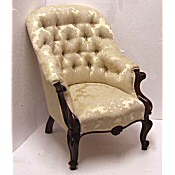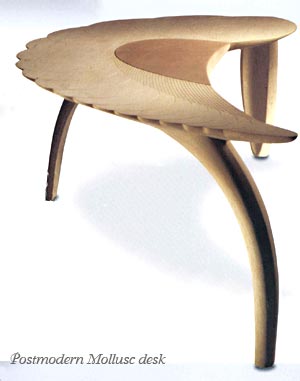Historicism


The second half of the 19th century was a time of historical revivals. Epitomized by the Victorian interior in Britain, reproductions and reproduction furniture of earlier pieces in the Gothic, Renaissance and Rococo styles were mass produced - in line with industrialization.
There was a greater emphasis on comfort, reflected in curvaceous forms and deep buttoned upholstery.
Aesthetic Movement


Evident in Britain and the United States towards the end of the 19th century, this was a short lived movement advocating 'art for art's sake'.
Designers were influenced by the decorative arts of Japan, but also by Gothic, Moorish and Jacobean styles. Pieces borrowed elements from all these styles of antique furniture and were often ebonized to create a lacquered effect.
Arts and Crafts Movements


A forceful rejection of the mass produced and shoddy furniture produced as a result of the Industrial Revolution, the Arts and Crafts Movement championed good design, skilled craftsmanship and the finest traditional building materials, as part of an ideal of the good life.
The style associated with the movement developed in Britain and the United States during the second half of the 19th century and lasted well into the 20th century.
Designers worked with native woods - predominantly Oak - and produced simple, geometric pieces based on traditional vernacular forms, such as the settle. Additional forms of decoration were sparingly used, the idea being that the grain of the wood, often quartersawn, was sufficiently decorative in itself.
Mid-Century Modern


Mostly associated with designers working in the United States and Scandinavia after the end of World War Two. Mid-Century Modern furniture, and fitted furniture, was a natural extension of Modernism, but designers had a looser, altogether more sculptural approach to furniture.
They continued to make use of the latest technological advances, which now included the production of moulded plastics, from padding, and lightweight aluminium frames.
Characteristic of the period was the experimentation with innovative, often organic, shapes and a bolder use of colour.


Pop

Pop is a term used for design of the late 1950's and 1960's that exploited popular culture. Furniture could be made very cheaply and took the form of gimmicky, brightly coloured pieces, often inspired by the space age and designed predominantly for a young audience.
Characteristics of Pop are bright, moulded plastics and organic, amorphous forms.
Postmodern

Peaking in the 1980's, Postmodernism was a style that rejected the ideals of Modernism and promoted the creation of eclectic, distinctive furniture.
First expressed in architecture, the Postmodern style was interpreted in a variety of ways by furniture makers. Some borrowed motifs from different historic styles and incorporated them into a single piece, often made from a mixture of expensive and inexpensive materials.
Others produced 'high tech' pieces, or minimalist, unadorned designs using rudimentary materials such as clear acrylic and wicker.
No comments:
Post a Comment